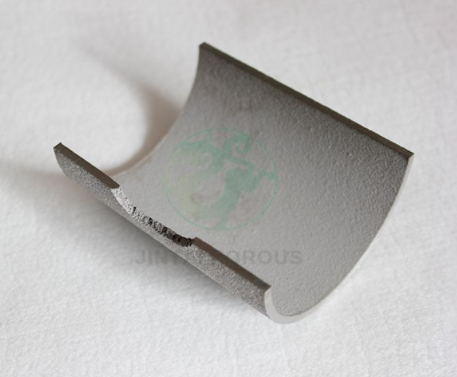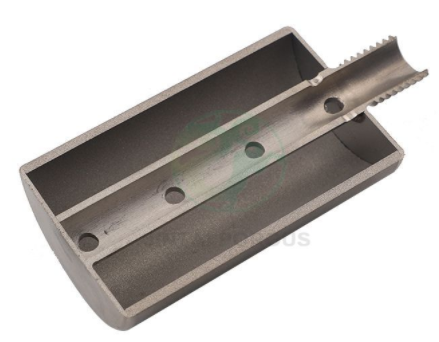What Is Sintered Metal?
What Is Sintered Metal?
When you start investigating how powdered metal parts are made, learning about sintered metal is essential. Many of the things we love most about powder metallurgy can be traced back to the sintering process.
What is sintered metal? Fortunately, while the fine details are quite complex, the basics are easy to understand. Keep reading to not only better understand sintered parts, but also how the powder metal process can create high-strength parts that are viable in many more applications than you realize.
What Is a Sintered Metal Part?
To make small metal parts, you've got to poke them, prod them, and (usually) put some heat to them. Metal is stubborn, and sintering helps make sure the powder behaves after your part is formed.
The sintering process in powder metallurgy (PM) involves heating a compacted powder to fuse the particles, which leads to a harder, stronger part. While the compaction process does a lot of the work, the physical pressure produced in the press isn't enough to create a final, work-ready component. Sintering is what comes after -- the final major step to produce a powder metal part you can rely on.
Before & During the Powder Metal Sintering Process
To get a clearer idea of how sintering fits into PM, let's start at the beginning of the powder metal process:
1. Choosing a Powder Composition
After talking with you about your performance requirements, your manufacturer will pick a powder composition that will yield the right results.
The powder mix will include the basic stuff you need, such as iron, nickel, molybdenum and or copper. It will also include other substances like lubricants to improve the flow of the powder into the die. Lubricants are removed by evaporation and heat as a leadup to sintering in a single-furnace process.
2. Compaction
After the powder is poured into the die, it's pressed with a whole lot of force to interlock the powder. The pressure creates connections strong enough to be called “green strength.” A green part won't exactly crumble in your hands, but it still needs to be finished by sintering to achieve optimal strength and hardness.
3. Sintering
Sintering is done by putting your parts through a rather toasty furnace. The goal is to control the temperature so it reaches just below the melting point of your parts' primary metal … but not quite. The sintering process causes the metal particles to bond together so you get a part that does what you need it to do.
Sintering Vs. Melting
It's easy to assume they're very similar, but there are distinct differences between sintering and melting.
Melting actually gets the metal hot enough that it changes from solid to liquid. Sintering is different because the heating process is highly controlled. You get the enhanced properties you need without having to melt the metal. One of the great things about sintering is that you can easily make parts out of metals with high melting points.
Sintering can accomplish a lot when done right, including:
Eliminating the lubricants in the compacted powder
Reducing the amount of oxygen on the powder's surface
Developing sintered necks between the particles, reducing pores and increasing strength
Partially or fully diffusing other elements in the mix, such as nickel, copper, and graphite
The last two points are of key importance to the customer. These steps are what produce better properties for your part.
High-Temperature Sintering
Conventional sintering and high-temperature sintering are different shades of the same color.
In our eyes, for sintering to be considered high-temperature, it needs to happen at around 100-250 °F hotter (in the case of iron-heavy materials) than the standard sintering temp for a particular metal. For iron-heavy metals, the typical temperature is 2050 °F. High-temp sintering is more expensive than conventional sintering because you're paying for extra “oomph” from the manufacturer's equipment.
However, the extra cost can produce powdered metal material properties not available in any other way. One study showed that high-temp sintered parts improved in the following ways:
Increases in tensile strength of 30%
Bending fatigue strength increases by 15%
Increases in impact energy of 50%
It's only one study, but the results were impressive nonetheless and we've seen similar results in our building. There are a few potential drawbacks to consider, though:
High-temperature sintering furnaces are much more expensive than conventional furnaces -- a cost that is passed on to the customer.
Parts that are sintered at high temps can shrink more than expected -- your manufacturer needs to plan accordingly.
Other Advances in Powder Metallurgy
Today, a select few powder metallurgy suppliers are going beyond the temperatures normally considered to be high-temperature sintering. What we now call ultra-high-temperature sintering further improves the properties of sintered metal by ramping the heat up to 2450-2500 °F.
Jintai has been committed to the development of metal porous materials and related technologies and applications. As early as more than 20 years ago, Jintai began to focus on the development and production of metal porous powder sintered filter elements. If you are interested in our products, please contact us now!





